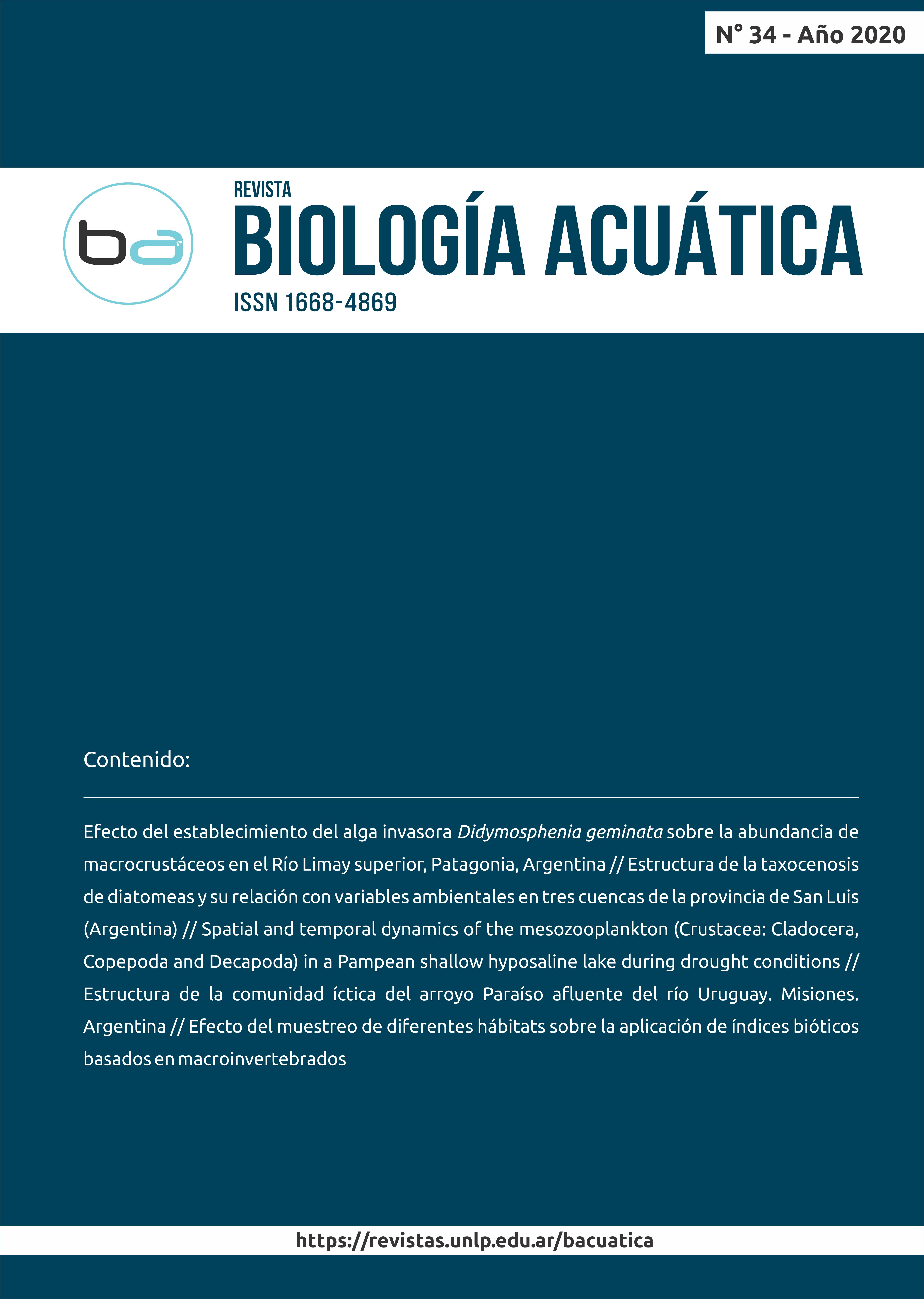Estructura de la comunidad íctica del arroyo Paraíso afluente del río Uruguay. Misiones. Argentina
DOI:
https://doi.org/10.24215/16684869e009Keywords:
abundance, biodiversity, composition, neotropical fish fauna, Paraíso streamAbstract
We analyzed the composition, specific diversity, abundance, number of endemism’s and trophic structure of the fish community of the Paraíso stream, affluent of the Uruguay River. Four fish samplings were carried out between September 2013 and March 2015, with eight monofilament gillnets. The total catch was 217 individuals distributed in 35 species of which 77% belong to the orders Characiformes (16 species) and Siluriformes (11 species) and the remaining 33% to the orders Perciformes (seven species) and Gymnotiformes (one species). The alpha diversity of effective numbers was 16.44. According to the non-parametric Chao 1 estimator, the species inventory was incomplete it would be necessary to find at least 16 species. Rare or accidental species accounted for 66%, with relative abundance of less than 10%. Common species were Crenicichla missioneira, Leporinus amae, Leporinus striatus and Astyanax lacustris. Seven endemic species from the Uruguay River basin were registered: C. missioneira, C. celidochilus, C. tendybaguassu, L. amae, Astyanax paris, A. troya, and Hemiancistrus fulliginosus. Most of the species captured (83%) were small. The community dominance index was higher during the spring (0.81). Organic matter of allochthonous origin was the main food resource. Six trophic categories were recognized, mostly detritivores and omnivores (61.5%). The community presented reproductive activity during all seasons of the year, with a preponderance in spring and winter with species such as L. striatus and A. piracicabae. The high specific diversity, endemism and the high dependency of the allochthonous organic material of the ichthyofauna demand the urgent need of protection and conservation of this watercourse.





















